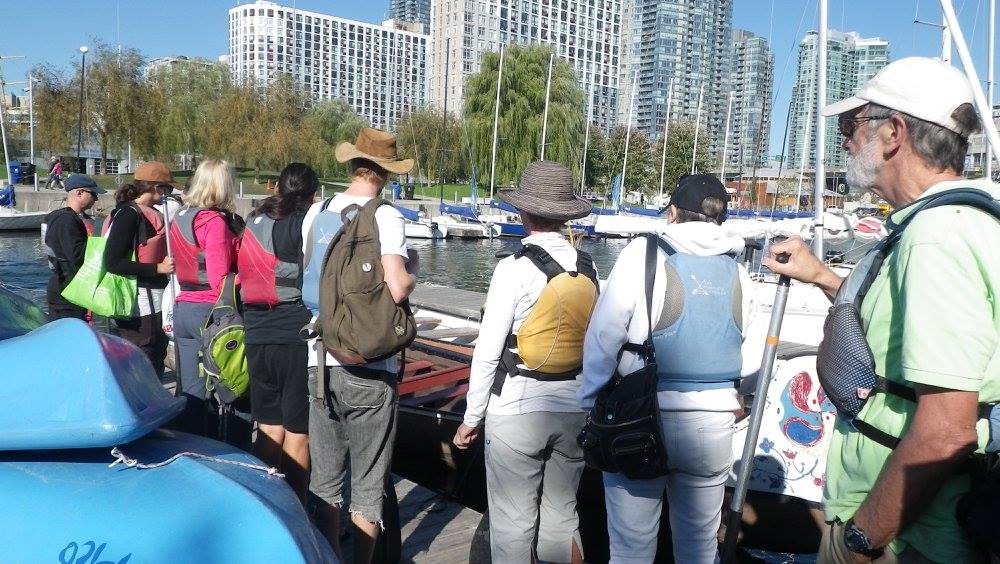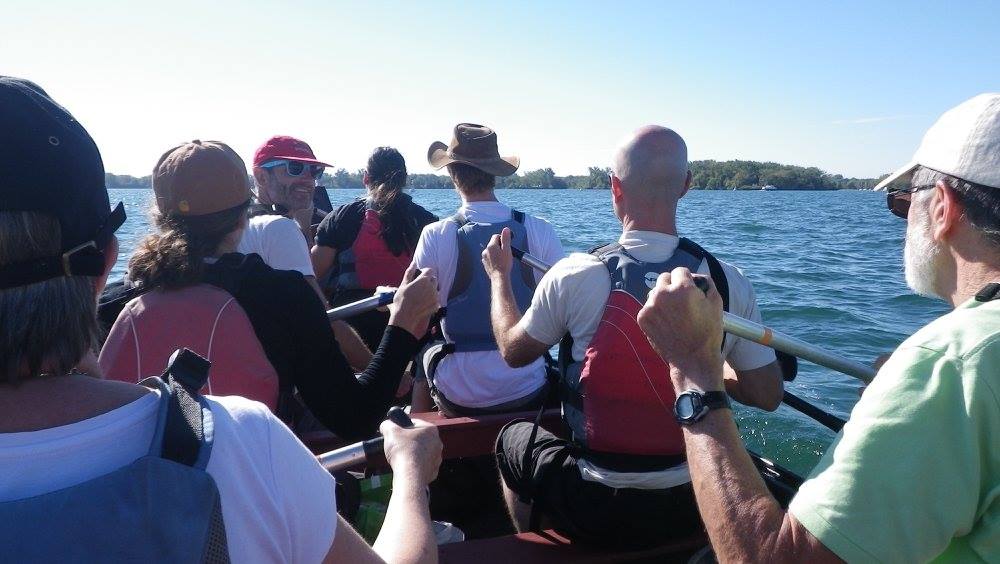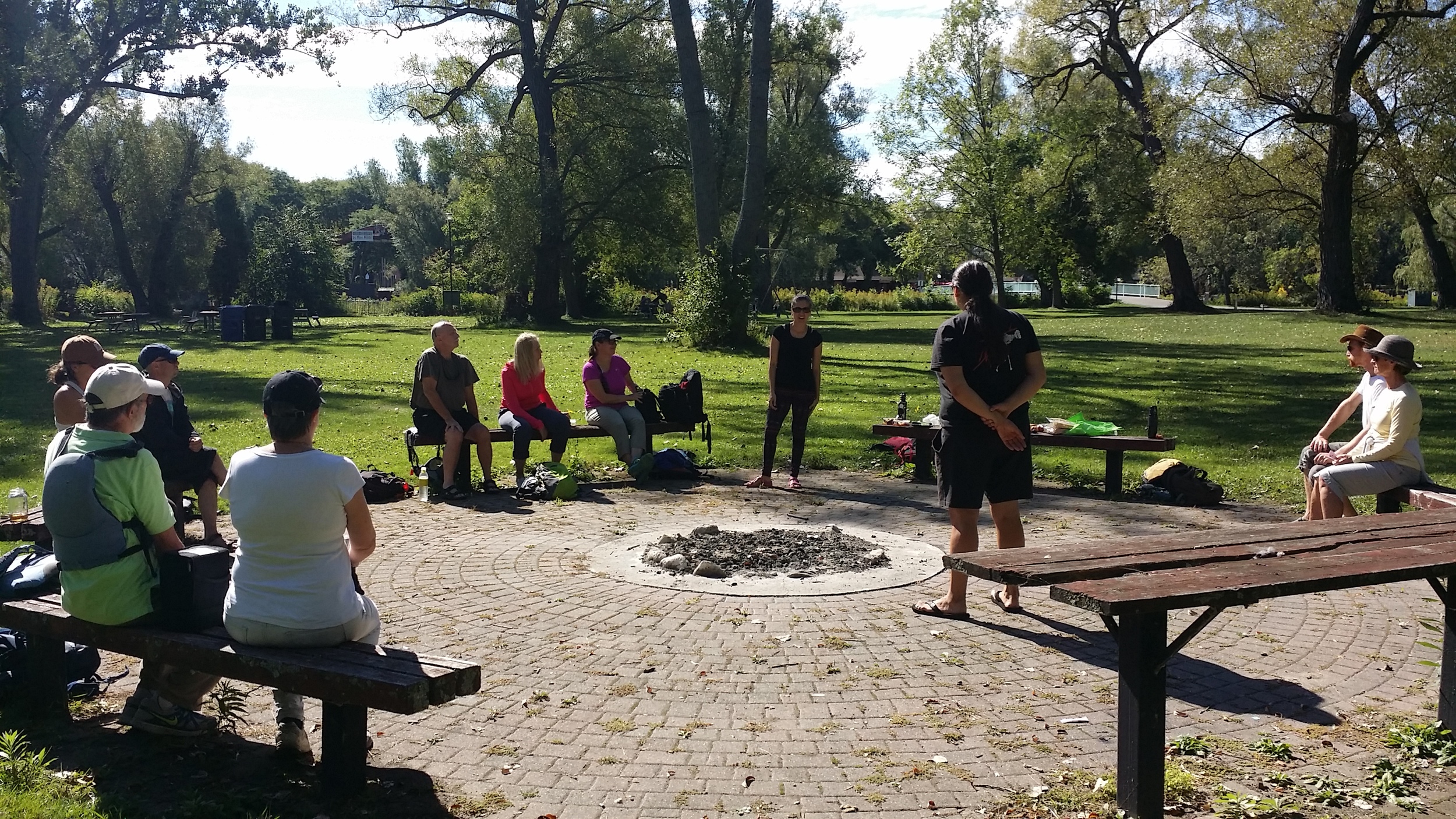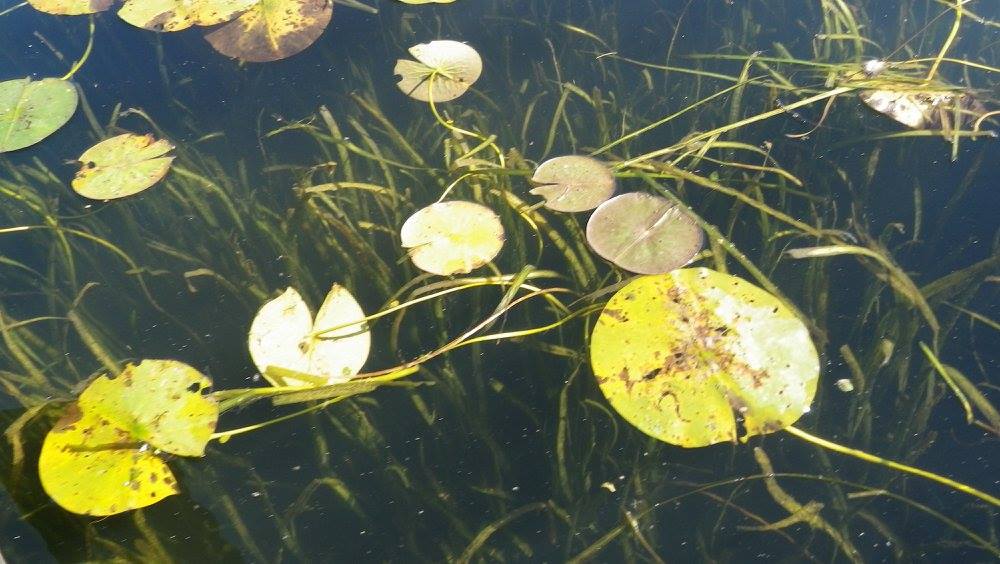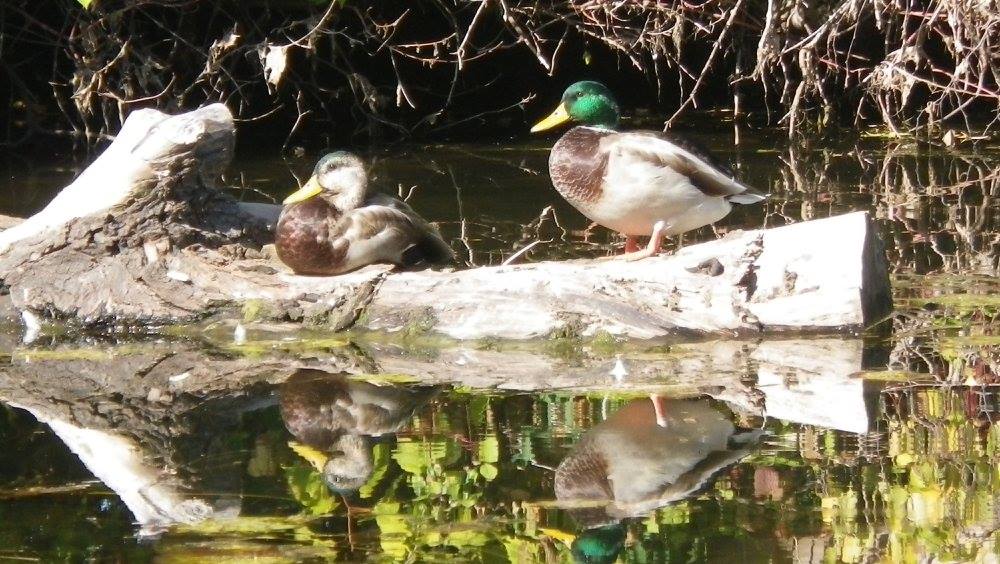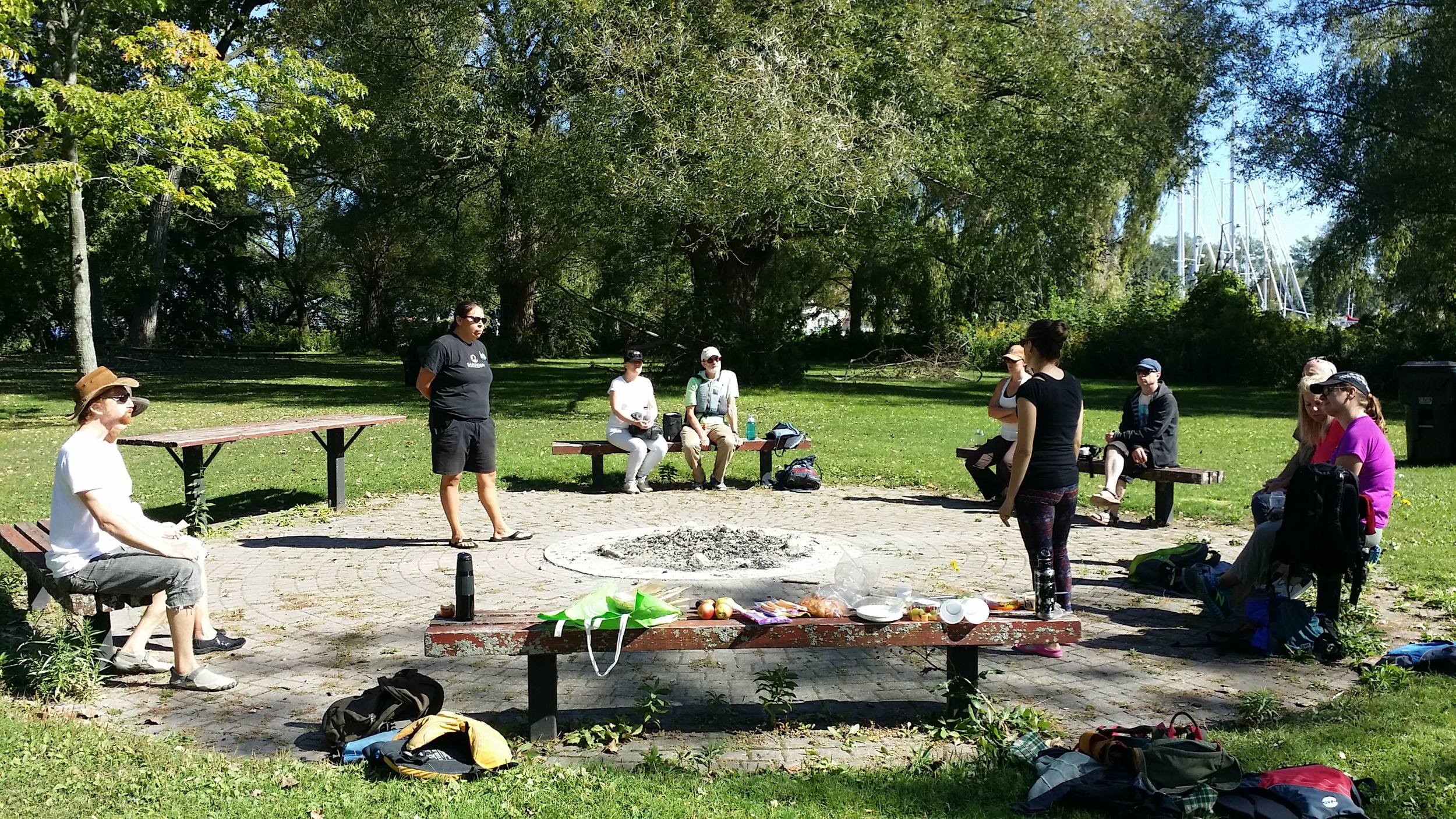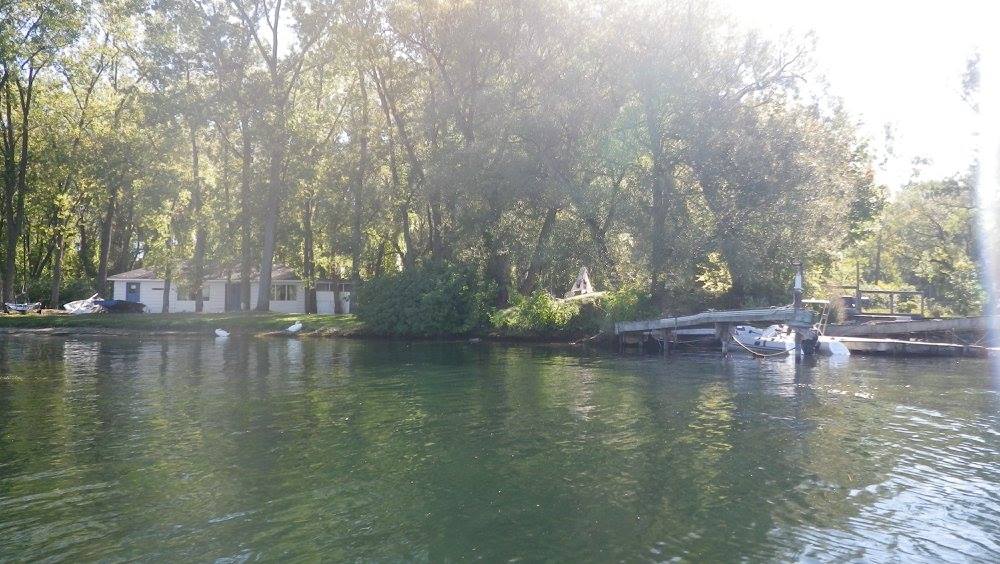Recreation. What is recreation? Canadians love the outdoors and especially water sports such as sailing, fishing, kayaking, and canoeing. Some water groups work closely with recreationalists since being on and enjoying the water fits well with stewardship.
On September 27th, we partnered with Sylvia Plain from the Great Lakes Canoe Journey project to re-introduce our group to the canoe.
We boarded our 'Voyageur' canoe just a few blocks from downtown Toronto and the iconic CN Tower. While we were all there to have some fun (some recreation) Sylvia wanted us to understand the canoe's role in Indigenous societies.
After some general orientation by our guide, we swiftly headed across the harbour and toward Toronto's islands. We had map of the area, but where in history were we? Who canoed these waters before European colonists came across the ocean? Most of us have never seen a map of the Great Lakes from another perspective (see below).
Did you know the Great Lakes basin are the traditional territories for Anishinaabe and Haudenosaunee peoples? Did you know Toronto is a Haudenosaunee word: Tkaronto.
Our group learned a lot about language while in our jeemonnug -- Sylvia taught us the Anishinaabemowin (Ojibwe) word for canoe.
We also learned that the seating positions in a canoe illustrate the Ojibwe words for youth and enthusiasm (front seat) and experience and knowledge (back seat). So the 12 of us carefully found our spots in the jeemonnug and glided across the water with symmetrical (mostly) and adventurous (always) strokes.
But history and language are never that simple. Many people in Tkaronto often honour the Mississauga (Anishinaabe) people as the only Indigenous nation of this area.
Suzanne Methot puts it this way:
The colonists spoke of owning the land. Aboriginal peoples believe that they are caretakers of the land, interconnected with all of creation. By prioritizing the Mississauga agreement with the Crown and assuming that the Mississauga “own” this territory as a result, we reproduce the idea that it is possible (and desirable) to own creation. The fact is, Toronto has played host to no less than three distinct peoples (the Huron, the Haudenosaunee, and the Mississauga), two different cultures (Iroquoian and Algonquian), and was the site of many trade gatherings and inter-tribal ceremonies. History is a debate informed by reason and logic, but it’s also contingent on the positioning of the teller. By omitting or failing to mention relevant aspects of the story, we fail to ensure a balance of perspectives.
Adding to this, "jeemonnug" doesn't translate into "canoe" through the mechanics of pure syntax. Sylvia teaches the craft of canoe building as a form of cultural education and youth leadership. Languages are not just words but worlds.
Blow-up boats and fibre-glass canoes lose the Ojibwe meaning of jeemonnug (also spelled jiimaan), since the root of this word is "ojiim" -- to kiss. When making a canoe, you press your lips against the birch bark and search for holes. So here we are in Tkaronto, lead by energy in the front, experience in the back, and pulling ourselves along in a 12-person 'mouth-sealed vessel'.
Our group was a mix of regular Great Lakes Commons participants along with curious folks seeing us on social media and those familiar with the Canoe Journey project. We spent the morning sharing stories and snacks, with a focus on what draws us to water and how protecting water makes us feel more alive.
We all had our own ways of re-connecting with water and during our lunch we shared a reading of the Great Lakes Commons Charter -- an invitational, aspirational and cooperative agreement on protecting the waters forever. The Charter puts our relationship (our ancestral ties, our sacred bonds, our life-affirming rights & responsibilities) with water at its center. In contrast, most water agreements focus solely on water quality or quantity and from a resource perspective, rather than as a commons.
It was important for us to be with the water while talking about how to care for it. A whole blog post could be written about noun v.s. verb-based languages, but Sylvia's jeemonnug story illustrates that understanding he world comes from re-connecting our relationship to it. As a builder of canoes, a drinker of water, and as a recreationalist on water -- What are you doing? How are you re-connecting? How are you re-creating?
We should be talking about Great Lakes Commoning, rather than just a commons since 'commons' is also a dis-connect without the act of 'commoning' -- the ways we share, protect, and honour. So there's much to be learned from verb-based words/worlds.
What's going on in your corner of the Great Lakes? How are you re-connecting and re-creating? For those in Toronto, check out First Story and stay tuned for another paddle in the spring.
